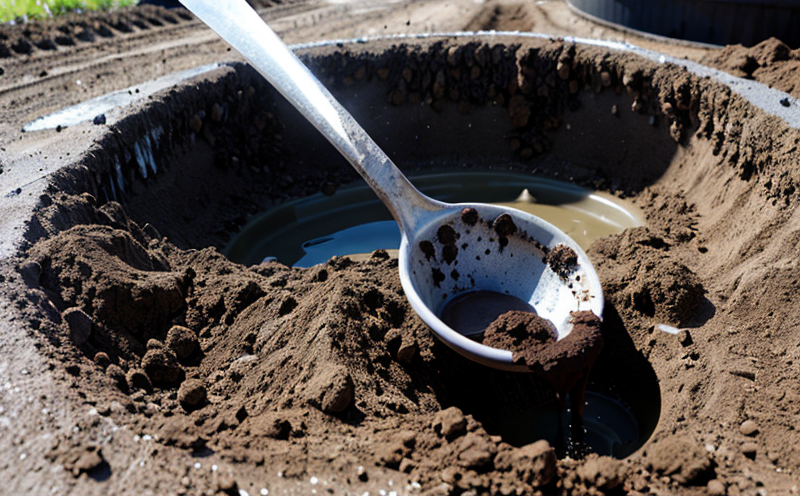ISO 5815 BOD Determination in Sludge Extract Test
The Biological Oxygen Demand (BOD) test is a critical component of water and wastewater quality assessment. ISO 5815 specifies the procedure for determining the biochemical oxygen demand of sludge extracts, which is essential for evaluating the biodegradable organic matter content. This test provides insights into the potential pollution load that could be released into receiving waters if the sludge were to enter them.
In wastewater treatment facilities, sludge is a byproduct of the treatment process and contains various organic materials. Accurate measurement of BOD helps in optimizing the treatment processes, ensuring compliance with environmental regulations, and enhancing overall water quality. The test method outlined in ISO 5815 ensures consistency and reliability across different laboratories, making it an indispensable tool for quality assurance.
The procedure involves extracting a sample from sludge solids, diluting it according to specified ratios, and incubating the solution under controlled conditions. The oxygen consumed by microorganisms during this process is measured at two intervals: 5 days and 24 hours after the start of the test. This allows for an estimation of both readily biodegradable and slowly biodegradable components.
Understanding the BOD of sludge extracts is crucial for several reasons:
- Evaluating the effectiveness of wastewater treatment processes.
- Predicting potential environmental impacts if sludge were to be disposed of improperly.
- Complying with regulatory requirements set by environmental agencies worldwide.
- Supporting research and development efforts in improving sludge management practices.
The test results are typically expressed as milligrams per liter (mg/L) of dissolved oxygen consumed. These values can then be used to estimate the total organic load that could enter water bodies, which is a key factor in assessing environmental impact.
Accurate BOD testing requires precise sample preparation and handling to ensure reliable results. Proper techniques for sludge extraction include using appropriate tools, ensuring aseptic conditions, and avoiding contamination from external sources. The dilution process must be carried out with care to maintain the integrity of the sample while achieving the required concentration.
Once prepared, the samples are incubated in controlled environments that closely mimic natural conditions. This step is critical as it simulates the biological activity present in water bodies, allowing for a more accurate assessment of the organic matter's biodegradability.
The equipment used for this test includes incubators capable of maintaining precise temperature control and timers to ensure consistent testing cycles. Analytical instruments such as dissolved oxygen meters are essential for measuring the amount of oxygen consumed over time.
Why It Matters
The importance of ISO 5815 BOD determination in sludge extracts cannot be overstated. This test provides a clear picture of the biodegradable organic matter present in sludge, which is crucial for several reasons:
- Environmental Impact Assessment: Accurate BOD values help in predicting the potential impact on receiving water bodies if sludge were to be improperly disposed.
- Regulatory Compliance: Many countries have strict regulations regarding wastewater discharge, and compliance with these standards is essential for legal and ethical reasons.
- Treatment Efficiency Monitoring: By regularly testing BOD levels in sludge extracts, treatment facilities can identify inefficiencies in their processes and make necessary adjustments to improve performance.
In addition to its environmental significance, the ISO 5815 test is also vital for ensuring that wastewater treatment technologies are effective. This helps in maintaining high standards of water quality, thereby protecting public health and aquatic ecosystems.
Quality and Reliability Assurance
- Consistency: By adhering to the procedures outlined in ISO 5815, laboratories can ensure that their test results are consistent across different samples and time periods.
- Accuracy: The use of calibrated equipment and standardized methods minimizes errors, leading to more accurate BOD determinations.
- Traceability: Each test conducted under ISO 5815 can be traced back to the international standards it follows, ensuring that results are universally accepted.
The quality assurance measures implemented in this testing process include regular calibration of equipment, training of personnel on standardized procedures, and strict adherence to all specified conditions. These steps ensure that every test conducted is reliable and reproducible, which is essential for maintaining high standards in the industry.
International Acceptance and Recognition
- Global Standard: ISO 5815 is recognized as an international standard, ensuring that test results are accepted worldwide.
- Regulatory Compliance: Many regulatory bodies around the globe reference this standard in their guidelines and policies.
- Inter-Laboratory Comparability: The use of ISO 5815 ensures that tests conducted by different laboratories yield comparable results, facilitating better communication and collaboration among professionals in the field.
The widespread acceptance of this standard is a testament to its reliability and effectiveness. Laboratories that adhere to these procedures are able to produce results that are not only accurate but also internationally recognized, which is particularly important for global operations or when collaborating with international partners.





